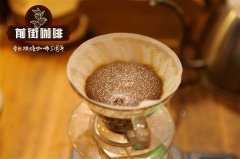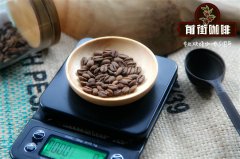Minas-Aguas Claras Water purification Manor, Brazil-how much is the Brazilian yellow bourbon coffee bean?

Professional coffee knowledge exchange more coffee bean information please follow the coffee workshop (Wechat official account cafe_style)
CHACAL Yellow Bourbon, Brazil is located in the llicinea area of Minas, Brazil. It belongs to the fine coffee produced by the Aguas Claras farm. This area has very good water quality, so good coffee can be grown.
Brazil Chacal Yellow Bourbon, Brazil, belongs to the Water purification Manor (Aguas Claras) in the Minas Llcinea region. Due to the excellent water quality in the area, the coffee produced is excellent. This coffee is a Brazilian yellow bourbon that we have recently found to be very cost-effective. Generally speaking, the price of yellow bourbon is on the high side, of course, its unique sweetness and richness are much better than the common new world species or red bourbon species commonly used in Brazil, especially in the throat rhyme, you will be able to feel a warm throat rhyme of cashew nuts.
This yellow bourbon is made of Pulped Nature (commonly known as PN treatment, that is, peeling and sunburn), which not only gives it a thick sweetness similar to that of honey treatment, but also avoids the unpleasant flavor of overfermentation.
Flavor: light citrus fruit aromas, rich cashew nut aromas, chocolate sweet aromas
Palate: sweet and soft fruit honey sweet, soft and comfortable slight acidity, weak bitterness.
Bourbon species, native to Bourbon Island in the Indian Ocean (now known as Reunion Island), is the second species caused by the Typica mutation. It belongs to the oldest existing coffee variety. The green fruit appears bright red when ripe, while the yellow bourbon species is derived from the cross between bourbon species and other varieties. Because of its low yield and relatively intolerant to wind and rain, it has not been widely planted. However, when planted in high altitude areas, it will have excellent flavor performance, which is more common in recent years.
Because it is distributed all over Brazil and its solid quality varies, it has its own standard-NO.2--NO.8 according to the number of sundries, NO.13--NO.19 according to the size of beans, and six grades according to taste. This Silado is a NO.2/NO18 grade and is excellent in the Brazilian coffee rating.
Many people say that Brazilian coffee has no outstanding advantages, and then it can not be generalized, not to mention some fine manor beans, even though the flavor of ordinary commercial beans is not obvious, but it has nothing to do with Brazilian coffee. All the soft flavors are mixed together, but have a unique charm. This bean is eye-catching, changing the soft flavor of Brazilian coffee. It has sweet and smooth fruit sweetness, obvious nutty flavor, balanced and supple acidity, weak and clean bitterness, rich chocolate aroma and nutty flavor, bright and refreshing taste, the original coffee business empire also has such delicate works.
Brazilian coffee generally refers to coffee produced in Brazil. There is a wide variety of Brazilian coffee, the vast majority of which are unwashed and sun-dried, classified according to the name of the state of origin and the port of transport. Brazil has 21 states and 17 states produce coffee, but four of them produce the largest, accounting for 98% of the country's total output. Brazil is vividly compared to the "giant" and "monarch" of the coffee world. There are about 3.97 billion coffee trees there, and small farmers now grow 75% of Brazil's total coffee production. The number of coffee producers in Brazil is twice or even three times that of Colombia, the second largest coffee producer in the world.
END
Important Notice :
前街咖啡 FrontStreet Coffee has moved to new addredd:
FrontStreet Coffee Address: 315,Donghua East Road,GuangZhou
Tel:020 38364473
- Prev

Introduction of Fine Coffee production in Ferro Ferro Manor, Brazil _ Coffee Flavor in Cerrado, Brazil
Professional coffee knowledge exchange more coffee bean information Please pay attention to the coffee workshop (Wechat official account cafe_style). There is no doubt that the variety, geographical and climatic environment, soil texture, planting technology, harvest, and processing of coffee will directly affect the quality of raw coffee beans. This time in Brazil, I experienced something different from Taiwan, Ethiopia and Bana.
- Next

Brazil Savoamptere227tero Silvestre Manor Micro-batch Coffee beans _ San Yeh Village, Brazil's Cerrado production area
Professional coffee knowledge exchange more coffee bean information please follow the coffee workshop (Wechat official account cafe_style) what kind of coffee have you had like a girl? That kind of soft, sweet, soft, mellow soft girl beans Brazilian Coffee Syrador Yes, Brazil, as the world's largest coffee producing region, commercial beans account for most of the country. But those who pay attention to the coffee shop must know that near
Related
- Detailed explanation of Jadeite planting Land in Panamanian Jadeite Manor introduction to the grading system of Jadeite competitive bidding, Red bid, Green bid and Rose Summer
- Story of Coffee planting in Brenka region of Costa Rica Stonehenge Manor anaerobic heavy honey treatment of flavor mouth
- What's on the barrel of Blue Mountain Coffee beans?
- Can American coffee also pull flowers? How to use hot American style to pull out a good-looking pattern?
- Can you make a cold extract with coffee beans? What is the right proportion for cold-extracted coffee formula?
- Indonesian PWN Gold Mandrine Coffee Origin Features Flavor How to Chong? Mandolin coffee is American.
- A brief introduction to the flavor characteristics of Brazilian yellow bourbon coffee beans
- What is the effect of different water quality on the flavor of cold-extracted coffee? What kind of water is best for brewing coffee?
- Why do you think of Rose Summer whenever you mention Panamanian coffee?
- Introduction to the characteristics of authentic blue mountain coffee bean producing areas? What is the CIB Coffee Authority in Jamaica?

